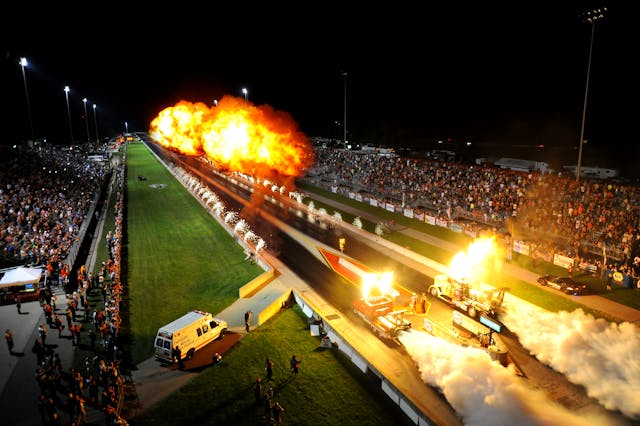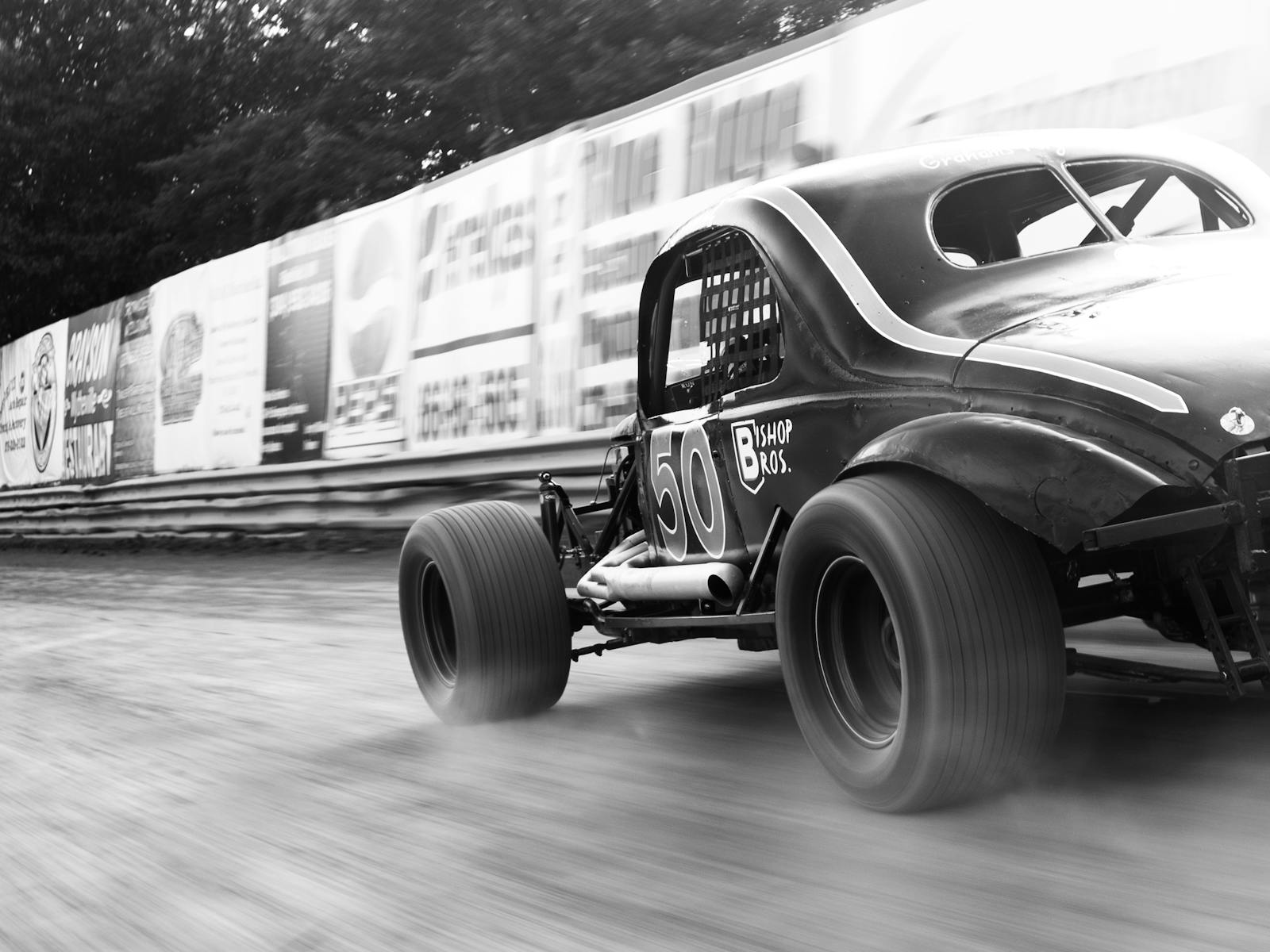The International Hot Rod Association roars into its 50th year with the throttle wide open
The International Hot Rod Association (IHRA) is celebrating its 50th anniversary this year. Over the last half-century, the organization has found its greatest success as a hub for grassroots racing. That the IHRA is still thriving today is a testament to the tenacity of its employees and racing participants. After surviving a number of challenges over those five decades—including the ongoing COVID-19 pandemic—the IHRA is poised to tackle 2021 doing more of what it does best: provide great venues that host great racing.
Larry Carrier founded the IHRA in 1971, after first leaving the National Hot Rod Association (NHRA) and then the American Hot Rod Association (AHRA). Carrier owned the Bristol International Speedway/Dragway, a one-half-mile oval and quarter-mile drag-strip complex that is tucked away between two mountains in the eastern tip of Tennessee. Carrier faced daunting challenges: first, from a sanctioning standpoint, the NHRA and AHRA oversaw almost all of the nation’s drag strips, and second, the feasibility of starting up a sanctioning body from nothing seemed a dubious effort at best. To make matters even more difficult, for the 1971 season at the Grand Americans, the AHRA had a contract with “Big Daddy” Don Garlits and a number of other top racers. With no tracks aside from Bristol and Rockingham, North Carolina—which Carrier also managed—and no top racers, Carrier’s success was far from certain.
“Way back then, drag racing was happening in southern California. The NHRA and founder Wally Park were all West Coast people, so I think this was Larry’s shot at being the East Coast person,” says Skooter Peaco, who has been with the IHRA for 17 years and is today its vice president. Initially, the IHRA mirrored the NHRA’s professional class structure of Top Fuel, Funny Car, and Pro Stock. Carrier was also responsible for scoring drag racing’s long-term sponsorship association with Winston, the R.J. Reynolds Tobacco Company’s brand.

In 1987, Carrier sold the IHRA to Billy Meyer, who owned the Texas Motorplex. At the time, this track was considered to be the top drag-racing facility in the world. The Motorplex had been the NHRA’s premier track, but for 1988 it hosted two IHRA national events. “Meyer lost a fortune with the IHRA, due primarily to the fact that he was plagued by horrible weather,” says Peaco. “Just about every national event he had was rained on or rained out.” Meyer ran into financial difficulties due in part to this bad luck, and he owned the IHRA for just one season before selling it.
From 1989 to 1992, the IHRA was run by Pro Stock racer Jim Ruth and Ted Jones, who had long served as Carrier’s right-hand man. Ruth and Jones managed to rejuvenate organization. In 1990, they introduced an all-new class, Pro Modified, which has become a feature at IHRA events and one of drag racing’s most successful classes. During this time, Pro Modified became the IHRA’s primary asset in its recovery from the 1988 season that had nearly destroyed it. Unfortunately, Ruth was stricken by cancer and died, so the IHRA was taken over by a group of drag racers. “Being racers as well as being the owners of the sanctioning body proved challenging,” notes Peaco. “They ran it from 1993 to 1996, then sold it to Elton Alderman, owner of Prolong Super Lubricants. He owned the IHRA for one year and then it was out of business.”

In 1988, Bill Bader purchased the IHRA and set about reviving it. He moved the head office to Norwalk, Ohio, where his track, Summit Motorsports Park, was located. “Bader took something that was finished and he built it up,” explains Peaco. “He went west and got a bunch of tracks and sponsors to follow him. Bader is a very charismatic guy, and is arguably one of the top, if not the top, track operator of all time.” In the wintertime when the race track was closed, Bader would go around the country promoting monster truck events.
Bader sold the controlling interest in the IHRA to Clear Channel/ SFX in 2001. “Clear Channel bought up a bunch of stuff back in the ’90s and early 2000s, and one of the things they bought was the big, touring monster truck and Supercross events,” recalls Peaco. “The guy that ran the motorsports division knew Bader and they put a deal together where Bader would run the show, Clear Channel would have the majority stake and provide marketing support.” The support failed to materialize and in late 2005, Clear Channel split into two separate corporate entities, Clear Channel Radio and Live Nation, with the IHRA operating under the latter. Feld Entertainment bought Live Nation’s motorsports division in 2008 and operated the IHRA for four years.

Next up came Joe Lubeck and his partners Edward Kobel and Michael Dezer; Kobel was part owner of the San Francisco 49ers at the time, and Dezer was a property developer in Miami. “Lubeck had bought Memphis International Raceway and he owned Palm Beach International Raceway,” says Peaco. “He wanted to own the sanctioning body and a few more tracks, and he was going to put all that stuff together and then take it public. That was his big plan. He only owned the IHRA from 2013 to 2014 because he ran out of money before he could put it all together and take it public. Today, the IHRA is owned by IRG Sports + Entertainment.”
IRG is poised to revive the IHRA by focusing on what has been its primary strength since 1971. “We have been very good at working with member tracks, where 99 percent of them aren’t hosting one of these big events on TV,” says Peaco. “They’re your local track, the guy down the road that owns the track with his wife. They’re trying to make a go of it, and they need somebody to put together some programs that their racers would like.

“That’s us, that’s the space we fill,” Peaco continues. “Our forte is sportsman racing, regular guys who are taking their street car to the race track, and from there to building a 10-second Camaro. We’re not going away, because the core of our sport remains these guys that are insuring their car with Hagerty, buying parts from Summit, and going to their local, family-owned, IHRA-sanctioned track. As long as there are track owners and racers who want to participate in this sport at an affordable level and take part in our value-oriented programs, then we have a space.”


